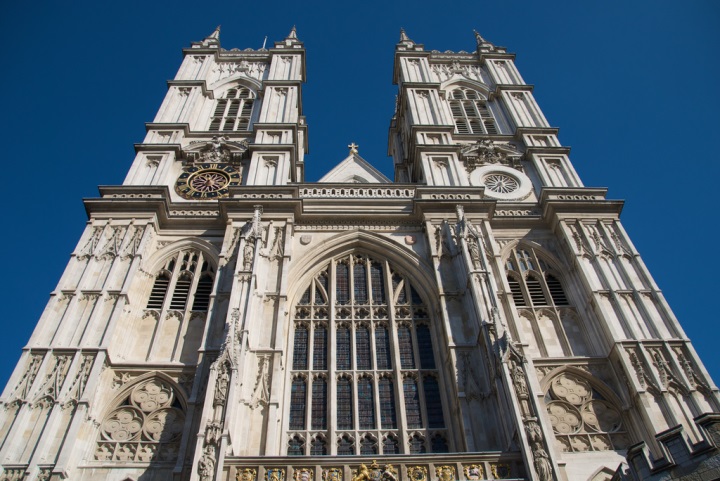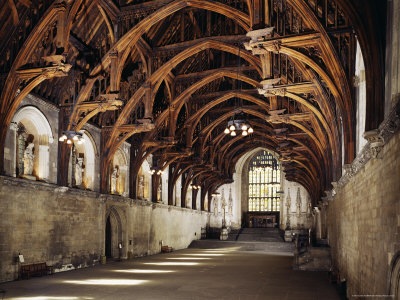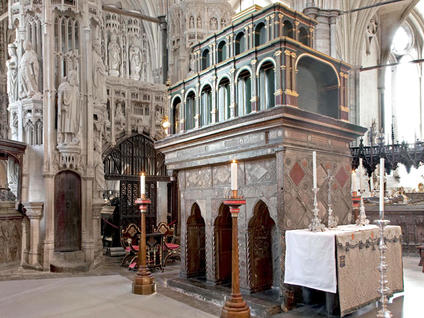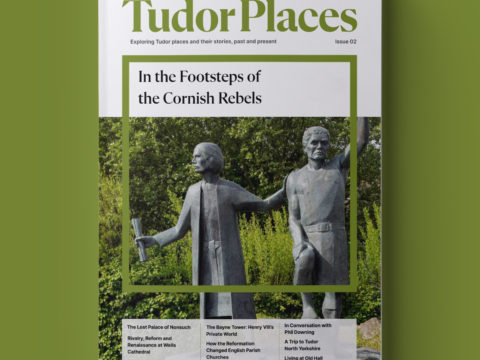Anne Boleyn's Coronation
Chapter 4 : The Coronation
Sunday, 1st June, Whitsunday, was the crowning moment of Anne Boleyn’s life in every sense. She was led forth from the Palace of Westminster to the Abbey to be crowned and anointed as Queen of England, wife of the King, and, she assumed, mother of his heir. She, a private gentlewoman from a middle-ranking family, had supplanted a daughter of Spain, and over-turned a thousand years of English obedience to the Church of Rome. It was her moment of glory.
The day began early, with the Mayor and Alderman, dressed in crimson velvet, ready to receive Anne in Westminster Hall before 8am. She emerged before 9am, dressed, as on the previous day in magnificent robes, but this time of purple velvet, furred with ermine. On her free-flowing hair she retained the circlet of gold and gems. Anne stood in the Hall, under a Cloth of State and around her assembled the Bishops, the Abbot and Monks of Westminster and the men of the King’s Chapel.

When all were ready, the red carpet was literally rolled out as the cloth that was traditionally laid between Westminster Hall and the High Altar of Westminster Abbey was unfurled. As soon as it was down, the procession began, in much the same order as the previous day with gentlemen, squires, knights, the City Aldermen and the Judges leading the way. They were clad in scarlet, rather than the crimson and violet of the previous day.
After the lesser nobles, the Marquis of Dorset and the Earl of Arundel emerged, carrying the sceptre, and the rod of ivory. The Earl of Oxford came next, carrying the crown itself. He was followed by the Lord High Steward, and the Earl Marshal’s deputy and then the Queen herself. The canopy over her was borne by four of the Lords of the Cinque Ports. The sides of the Queen’s robe were held up by the Bishops of London and Winchester and the train again by the Dowager Duchess of Norfolk.

Following the Queen were the Lords' wives, decked out in scarlet, banded with the amount of lettice (a kind of imitation ermine) appropriate to their rank. When she arrived in the Abbey (a distance of perhaps 300 yards from Westminster Hall) Anne was conducted to a chair for a short rest.
When the Queen had drawn breath, she descended from her chair and approached the High Altar, in front of which she prostrated herself – not an easy action for a woman in her sixth month of pregnancy. She stood up, and in front of the altar, was crowned by Archbishop Cranmer, with the Crown of St Edward, and given the rod and the sceptre. The Queen thus accoutred, the Te Deum was sung. The Crown of St Edward was then replaced with a lighter model, made especially for Anne, after which the Mass was performed, with Anne making offerings at the shrine of Edward the Confessor.

The Queen then withdrew to a room set aside for her to take a short rest. Suitably refreshed, she re-emerged, to find that all of the peers had donned their coronets. The procession then reformed to return to Westminster Hall, with Anne, wearing her crown, supported on one side by her father, the Earl of Wiltshire, and on the other by the Lord Talbot. On her return to the Palace, she withdrew for a rest, whilst the Coronation feast was prepared.
